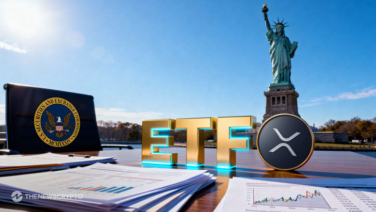- Cryptocurrency regulation refers to the rules and policies that oversee how digital assets are used, traded, and secured, aiming to protect investors and prevent illegal activities.
- Cryptocurrency regulation plays a vital role in ensuring fair markets, and encouraging innovation, all while minimizing risks.
Cryptocurrency has come a long way—from a fringe concept known only to tech-savvy circles to a key player in the global financial ecosystem. As digital assets gain more mainstream acceptance, governments and regulators worldwide are working to figure out how best to fold them into existing financial and legal frameworks.
In this article, we’ll take a closer look at how crypto regulation has developed over time, what events have triggered regulatory action. Also, how different countries are approaching the issue, and where the space might be headed in the near future.
The Genesis of Cryptocurrency Regulation
When Bitcoin emerged in 2009, it introduced a new kind of financial system—one that operated independently from traditional banks. In the beginning, the lack of regulatory oversight allowed for rapid experimentation and adoption.
However, that same freedom also opened the door to misuse. Without clear rules in place, the space quickly attracted criminal activities involving money laundering, scams, and illicit financing.
The downfall of Mt. Gox, once the largest Bitcoin exchange, and the rise and fall of the Silk Road marketplace, known for facilitating illegal transactions with Bitcoin. It highlighted serious vulnerabilities in the early crypto landscape. In addition, these events made it clear that proper regulation is essential to protect investors and maintain financial stability.
Catalysts for Regulatory Intervention
The high-profile events have since pushed regulators to reconsider how digital assets should be governed.
FTX Collapse: The collapse of FTX in 2022 — once one of the world’s largest cryptocurrency exchanges — served as a wake-up call for governments worldwide. Significantly, the fallout exposed glaring gaps in regulatory oversight, left countless investors facing massive losses, and shook confidence across the entire crypto market.
Environmental Concerns: Cryptocurrency mining—especially Bitcoin—has come under scrutiny for its heavy energy use and the environmental concerns that come with it. Countries like China and Kuwait have taken steps to limit mining operations due to the strain they place on power grids and their broader environmental impact.
Market Volatility: Wild swings in cryptocurrency prices pose serious risks not only to individual investors but also to the broader financial system. As a result, there’s been a growing push for stronger regulations to help address these potential threats.
Global Regulatory Landscape
United States:
The U.S. has taken a fragmented approach to cryptocurrency regulation, with different government agencies overseeing different parts of the market. Besides, the Securities and Exchange Commission (SEC) and the Commodity Futures Trading Commission (CFTC) have been proactive regulators of digital assets. Recent events include:
Strategic Bitcoin Reserve: Donald Trump issued an executive order in March 2025 creating a strategic Bitcoin reserve for the United States to reinforce the country’s leadership status in digital assets globally.
Legislative Efforts: Crypto legislation is growing more bipartisan, and taking a stablecoin focus as well as classifying digital assets.
United Kingdom:
The UK’s Financial Conduct Authority (FCA) has come up with tougher regulations to govern the crypto market:
Restrictions on Borrowing: Some proposals aim to shield everyday investors from excessive risk by banning the use of borrowed funds to purchase cryptocurrencies.
Regulation of Stablecoins: The UK is looking to remove domestic regulatory requirements for overseas stablecoin issuers. It is part of a broader effort to boost international collaboration and strengthen its position as a global fintech hub.
European Union:
The EU has acted proactively with the proposal of the Markets in Crypto-Assets (MiCA) regulation to introduce a uniform legal framework for digital assets throughout member states. Also, this regulation tries to offer consumer protection, affirm financial stability, and facilitate innovation in the crypto market.
China:
China has a tough approach to cryptocurrency, banning individual crypto transactions and mining activities. Moreover, the country is focused on establishing its own central bank digital currency (CBDC), the digital yuan. This aims to maintain control over the financial system while promoting the use of blockchain technology for government-backed projects.
Middle East:
Such countries as the United Arab Emirates (UAE) are embracing crypto, and Dubai has become an important crypto hub. Dubai has quickly become a go-to spot for big crypto events and has drawn in a lot of investment. Its approach to regulation is much more open and welcoming, especially when compared to the stricter policies in other parts of the world.
Key Cryptocurrency Regulatory Trends
- Global Push for Uniform Regulation
A key trend gaining traction this year is the global push for more aligned crypto regulations. Organizations such as the Financial Stability Board (FSB) and the International Monetary Fund (IMF) are calling for clearer rules and a more unified framework when it comes to overseeing stablecoins, crypto exchanges, and decentralized platforms.
- Stablecoins Under the Spotlight
Stablecoins have become important, particularly as their role in cross-border payments and consumer transactions grows. Several countries are considering regulations that would require stablecoin issuers to maintain full reserves. It comes with strict disclosure and auditing requirements.
- DeFi and DAOs Enter Regulatory Crosshairs
Decentralized finance (DeFi) and decentralized autonomous organizations (DAOs) are being subject to fresh waves of examination. While their permissionless and anonymous architecture tests conventional regulatory designs, governments are turning to more and more emphasis on targeting front-ends, developers, and governance actors. Regulators are indicating that decentralization is no exception from AML and investor protection legislation.
- Stricter KYC/AML Enforcement
Know Your Customer (KYC) and Anti-Money Laundering (AML) standards are tightening across the board. Crypto exchanges and wallet providers are being pushed to implement robust identity verification systems. Some countries are extending these requirements to DeFi protocols and NFT marketplaces. Furthermore, these changes are curbing illicit activity without stifling innovation.
Rise of CBDCs and Their Regulatory Influence
Central Bank Digital Currencies (CBDCs) are commencing or stepping into pilot phases in several countries. Their introduction is reshaping how regulators approach private digital assets. Particularly, in terms of consumer protection, monetary sovereignty, and financial inclusion. As CBDCs develop, regulators may begin to view private cryptocurrencies as a supplement to, rather than a competitor with, sovereign digital currencies.
License and Registration Mandates Expand
Most jurisdictions are enacting or enhancing licensing regimes for crypto companies. Whether it is digital asset custody, exchange business, or token issuance, businesses are being increasingly required to register with national regulators. This trend is part of a larger attempt to subject crypto companies to the same compliance regimes as traditional financial institutions.
Future Outlook of Cryptocurrency Regulation
Cryptocurrency regulation is set to evolve as new technologies emerge and market forces continue to shape the landscape.
Global Harmonisation: Plans are underway to establish international regulatory standards that will support cooperation across borders and preventing regulatory arbitrage.
Spotlight on Stablecoins and CBDCs: As stablecoins continue gaining traction, regulators are expected to pay closer attention to how they’re created and used. At the same time, central banks moving forward with Central Bank Digital Currencies (CBDCs) will likely shape how digital assets are governed in the broader financial landscape.
Enhanced Consumer Protection: Governments and regulators are expected to place greater emphasis on protecting consumers by requiring clearer transparency. It further enforce risk disclosure obligations, and introduce safeguards to prevent fraud and market manipulation.
Environmental Regulations: Due to growing concerns over the environmental toll of cryptocurrency mining—especially the high energy consumption involved—regulators are increasingly expected to introduce sustainability-focused rules aimed at reducing the industry’s ecological footprint.
Conclusion
Regulating cryptocurrencies is a delicate balancing act—on one hand, there’s a need to foster innovation. On the other hand, to protect financial stability. As digital assets become more intertwined with the global financial system, it’s increasingly important for regulatory approaches to be clear, adaptable, and built on international cooperation.
If regulators can address the risks while embracing the potential of crypto, they’ll be better positioned to shape a digital financial landscape that is both secure and accessible to all.








